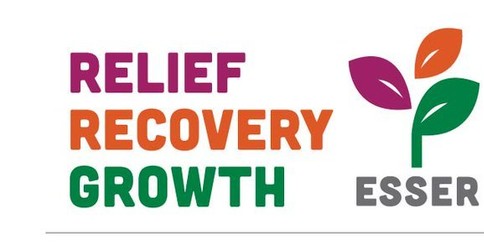
Five Things You Should Know
This month we celebrate the 2-Year Anniversary of ARP ESSER! Please take a moment to reflect upon this milestone. The Oregon Department of Education (ODE) is grateful for everything districts do to ensure Oregon students are learning and thriving. Also, thank you for all of your attention to planning and implementation of the Elementary and Secondary School Emergency Relief III (ESSER III) Fund. Here are 5 things you should know:
District, ESD, and State-Sponsored Charter School Data Collection Deadline: April 7
See the Annual ESSER Data Collection webpage for a list of the data that will be collected, frequently asked questions, and links to the submission forms. Contact the ODE.ESSER@ode.oregon.gov email with any questions you have!
ESSER II & III Deadlines
Funds must be spent by 9/30/23 (for ESSER II) or 9/30/24 (for ESSER III). We encourage districts to start their capital expenditure projects as soon as possible due to continued materials and labor shortages. If you have a capital expenditure project that you expect to go beyond the above dates, please contact us immediately.
|
|
ESSER II
|
ESSER III
|
|
(CRRSA Act)
|
(ARP Act)
|
|
Award Period
|
03/13/20 - 09/30/22
|
03/13/20 - 09/30/23
|
|
Deadline for Final Spending (with Tydings Extension)
|
9/30/2023
|
9/30/2024
|
|
Deadline for Claiming Funds in EGMS and Filing Reimbursement
|
November 14, 2023
|
November 14, 2024
|
A message from Colt Gill, Director of the Oregon Department of Education:
Districts have worked hard to think both creatively and strategically about how to best invest their Elementary and Secondary School Emergency Relief (ESSER) funds. We appreciate how schools are tailoring their expenditures to support students based on local needs and community engagement across our state. Now, as we enter the second year of ARP ESSER III funding, its time to tell the story of how schools have used this funding to help address unfinished and accelerated learning, return to in-person instruction, and take action to bolster the social and emotional needs of both the children and the adults in our schools.
We’ve designed this District ESSER Communications Toolkit to help school districts communicate about how they used their ESSER funds to address their immediate needs and to position their community for long-term wellness and academic success. This toolkit contains templates, draft language, and ideas for districts to use to communicate effectively with key audiences, including students, families, staff, and other education partners. These resources include:
- Overall guidance on engagement and communication
- Suggested social media postings
- Press release template
- Sample ESSER information slides
- Prompt for creating short video segments to share on social media or websites
- Additional resources
District leaders are encouraged to customize and/or use any of the ideas, language, and visuals included in the toolkit to supplement their local messaging or to jumpstart a new outreach effort. For additional resources, or for support with telling your local stories, please contact Kristin Bigler, Oregon Department of Education, Public Affairs Specialist, kristin.bigler@ode.oregon.gov. The toolkit is also available on the ODE ESSER website.
If you have any questions or technical assistance needs regarding ESSER funds, please contact the ESSER inbox at ODE.ESSER@ode.oregon.gov.
We are excited to highlight one of the 12 projects Oregon has designated as an ESSER III Set-Aside Investment below. Narratives about Oregon’s full plan for the state’s allocation of ESSER III Set-Aside funds can be found here.

Statewide, early learning system leaders, programs, and providers will receive training to implement effective practices for reducing suspension and expulsion in early learning settings. This $4.4 million investment uses Elementary and Secondary School Emergency Relief (ESSER III) Funds to expand training and coaching across the early learning system, ensuring a more inclusive early learning system needed for infants, toddlers and preschool children experiencing disability to access high-quality early care and education.
Read the full media release.
|